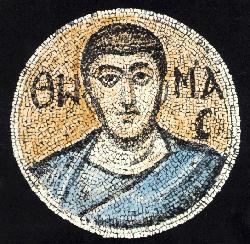Dialogue of the Saviour on:
[Wikipedia]
[Google]
[Amazon]
The Dialogue of the Saviour is one of the New Testament apocrypha texts that was found within the Nag Hammadi library of predominantly Gnostic texts. The text appears only once in a single Coptic
 The text is somewhat peculiarly constructed, containing also a few large interruptions seemingly out of place within, and only superficially edited into, the dialogue. Starting with a series of questions ultimately concerning esoteric knowledge and its pursuit, the text abruptly turns to a description of the origin of the world, interrupted briefly by a return to dialogue. Having expounded the description of creation, it returns to the Gnostic question and answer session about how to achieve salvation via gnosis, but is abruptly interrupted by a ''natural history list'' of the Four Elements, the powers of heaven and earth, and so forth.
After the history list, there is an ''apocalyptic'' vision, in which Didymus Judas Thomas, Mary, and Matthew, are shown hell from the safety of the edge of the earth, and an angel announces that the material world was an unintended evil creation (see
The text is somewhat peculiarly constructed, containing also a few large interruptions seemingly out of place within, and only superficially edited into, the dialogue. Starting with a series of questions ultimately concerning esoteric knowledge and its pursuit, the text abruptly turns to a description of the origin of the world, interrupted briefly by a return to dialogue. Having expounded the description of creation, it returns to the Gnostic question and answer session about how to achieve salvation via gnosis, but is abruptly interrupted by a ''natural history list'' of the Four Elements, the powers of heaven and earth, and so forth.
After the history list, there is an ''apocalyptic'' vision, in which Didymus Judas Thomas, Mary, and Matthew, are shown hell from the safety of the edge of the earth, and an angel announces that the material world was an unintended evil creation (see
Nag Hammadi Library English version of the text
Gnostic apocrypha Coptic literature Nag Hammadi library {{NewTestament-apocrypha-stub
codex
The codex (plural codices ) was the historical ancestor of the modern book. Instead of being composed of sheets of paper, it used sheets of vellum, papyrus, or other materials. The term ''codex'' is often used for ancient manuscript books, with ...
, and is heavily damaged. The surviving portions indicate that the general content is a dialogue with Jesus, in a similar manner to, and possibly based on, the Gospel of Thomas.
Contents
 The text is somewhat peculiarly constructed, containing also a few large interruptions seemingly out of place within, and only superficially edited into, the dialogue. Starting with a series of questions ultimately concerning esoteric knowledge and its pursuit, the text abruptly turns to a description of the origin of the world, interrupted briefly by a return to dialogue. Having expounded the description of creation, it returns to the Gnostic question and answer session about how to achieve salvation via gnosis, but is abruptly interrupted by a ''natural history list'' of the Four Elements, the powers of heaven and earth, and so forth.
After the history list, there is an ''apocalyptic'' vision, in which Didymus Judas Thomas, Mary, and Matthew, are shown hell from the safety of the edge of the earth, and an angel announces that the material world was an unintended evil creation (see
The text is somewhat peculiarly constructed, containing also a few large interruptions seemingly out of place within, and only superficially edited into, the dialogue. Starting with a series of questions ultimately concerning esoteric knowledge and its pursuit, the text abruptly turns to a description of the origin of the world, interrupted briefly by a return to dialogue. Having expounded the description of creation, it returns to the Gnostic question and answer session about how to achieve salvation via gnosis, but is abruptly interrupted by a ''natural history list'' of the Four Elements, the powers of heaven and earth, and so forth.
After the history list, there is an ''apocalyptic'' vision, in which Didymus Judas Thomas, Mary, and Matthew, are shown hell from the safety of the edge of the earth, and an angel announces that the material world was an unintended evil creation (see Yaltabaoth
Yaldabaoth, Jaldabaoth, or Ildabaoth is an evil deity and creator of the material world in various Gnostic sects and movements, sometimes represented as a theriomorphic, lion-headed serpent. He is identified as the Demiurge and false god who ke ...
). Finally, the text returns to the question-based dialogue.
Composition
The rather artificial manner in which other texts (the vision of hell, the natural history list, and the creation theory) appear to have been inserted into a question-based dialogue, and the abrupt change halfway through from referring to Jesus as ''Lord'' to referring to him as ''Saviour'', has led many to propose that it is based on four or five different original works. However, due to the damage that the text has suffered, study of it has so far proven too difficult to identify what these texts might be (although the dialog shares an affinity with the Gospel of Thomas). The final redaction is estimated to have taken place around 150 AD.References
External links
Nag Hammadi Library English version of the text
Gnostic apocrypha Coptic literature Nag Hammadi library {{NewTestament-apocrypha-stub